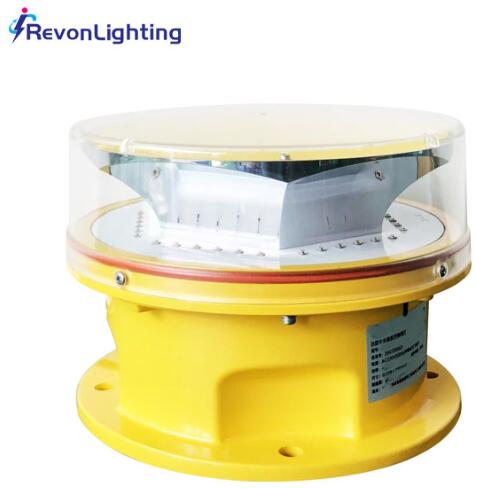Posted: 2025-01-02
In aviation and construction, where safety and precision are paramount, the OB light serves as an indispensable tool. Short for "obstruction light," this device is designed to ensure visibility of structures that could pose potential hazards to aircraft or other machinery. With advancements in technology, the OB light has evolved into a highly efficient and reliable solution for marking obstacles, reducing risks, and enhancing operational safety.
What is an OB Light?
An OB light is a specialized lighting device used to mark tall structures such as towers, buildings, wind turbines, and cranes. These lights are designed to be visible from long distances, especially during nighttime or low-visibility conditions. They are a critical component of aviation safety regulations and are used globally to mitigate risks associated with airborne navigation.

Key Features and Advantages
High Visibility: OB lights use advanced optics and high-intensity LEDs to ensure maximum visibility, even in challenging weather conditions.
Energy Efficiency: Modern OB lights incorporate energy-saving LED technology, significantly reducing power consumption without compromising performance.
Durability: Built to withstand harsh environments, these lights are often waterproof, corrosion-resistant, and operational in extreme temperatures.
Automated Operation: Equipped with sensors, OB lights can automatically turn on at dusk and off at dawn, ensuring uninterrupted performance.
Compliance with Regulations: OB lights are designed to meet international aviation and safety standards, ensuring they are suitable for various applications worldwide.
| OB lights |
| OB light |
Applications of OB Lights
The versatility of OB lights makes them essential across multiple industries:
Aviation Safety: OB lights are mandatory for marking tall structures near airports or within flight paths to prevent collisions.
Construction Sites: Cranes and temporary structures are marked with OB lights to enhance visibility and reduce risks during nighttime operations.
Telecommunication Towers: These lights are used on cellular and broadcast towers to alert pilots to their presence.
Wind Farms: Wind turbines often require OB lights to ensure they are visible to aircraft, especially in remote areas.
Urban Infrastructure: High-rise buildings and bridges use OB lights as a precautionary measure to enhance nighttime visibility.
Challenges and Solutions
Despite their critical role, OB lights face challenges such as:
Energy Consumption: Traditional models can be power-intensive, but the shift to solar-powered and LED-based designs has significantly mitigated this issue.
Maintenance: Regular maintenance is essential to ensure consistent performance. Innovations like remote monitoring systems help streamline upkeep.
Light Pollution: To address concerns about excessive brightness, manufacturers now offer adjustable brightness levels and directional lighting options to minimize environmental impact.
Innovations in OB Light Technology
The field of OB light technology is constantly evolving to address emerging needs and challenges:
Solar-Powered Models: Solar-powered OB lights are gaining popularity for their eco-friendly and self-sustaining design, especially in remote areas.
Smart Connectivity: IoT-enabled OB lights allow for remote monitoring, diagnostics, and control, reducing maintenance costs and improving efficiency.
Advanced Optics: New lens designs enhance light distribution, ensuring better visibility while consuming less power.
Longer Lifespan: Improved materials and manufacturing techniques are increasing the longevity of OB lights, reducing replacement costs.
Regulations and Standards
OB lights are subject to stringent international standards to ensure their effectiveness. Organizations such as the International Civil Aviation Organization (ICAO) and the Federal Aviation Administration (FAA) have established guidelines for the installation, brightness, and operational parameters of these lights. Compliance with these standards is crucial for ensuring the safety and functionality of OB light systems.
Future Prospects
As urban landscapes grow and renewable energy projects expand, the demand for reliable OB light solutions will continue to rise. Innovations in energy efficiency, smart technology, and eco-friendly designs are expected to drive the development of more advanced OB light systems, meeting the evolving needs of industries worldwide.
The OB light is more than just a lighting device; it is a cornerstone of safety and visibility in modern infrastructure. By ensuring the clear marking of obstacles, these lights play a vital role in preventing accidents and safeguarding lives. With continuous advancements in technology, the OB light will remain an essential tool in enhancing safety across industries.